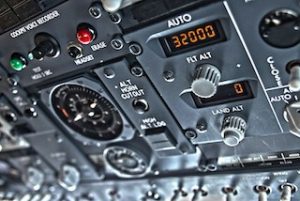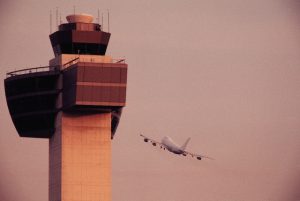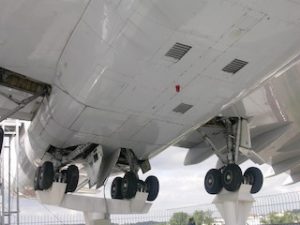Full Flight Simulator (FFS) Training With Laminar
 Building upon the foundational skills established in Fixed Base Simulator (FBS) sessions, Full Flight Simulator (FFS) sessions play a critical role in the advanced training of pilots. These sessions are designed to enhance pilots’ handling skills while reinforcing the procedures learned previously. This article delves into the structure, assessment criteria, and key learning areas of FFS sessions, illustrating their importance in shaping proficient and confident pilots.
Building upon the foundational skills established in Fixed Base Simulator (FBS) sessions, Full Flight Simulator (FFS) sessions play a critical role in the advanced training of pilots. These sessions are designed to enhance pilots’ handling skills while reinforcing the procedures learned previously. This article delves into the structure, assessment criteria, and key learning areas of FFS sessions, illustrating their importance in shaping proficient and confident pilots.
Structure of FFS sessions
Full Flight Simulator sessions at Laminar continue the practice-oriented approach of FBS but with added complexity and depth. These sessions encompass normal procedures, supplementary procedures, and non-normal procedures, providing a comprehensive training experience.
Normal procedures
Normal procedures refer to routine operations conducted under standard conditions. These include pre-flight checks, takeoff, cruise, descent, and landing. During FFS sessions, pilots practice these procedures to ensure they can perform them accurately and efficiently. The goal is to instil a high level of proficiency and consistency, ensuring that pilots can handle routine operations seamlessly.
Supplementary procedures
Supplementary procedures are additional procedures that support normal operations. These may include actions such as crosswind landings, instrument approaches, and performance of go-arounds. By practicing these procedures, pilots enhance their ability to manage various operational scenarios that may arise during a flight. This training ensures that pilots are well-prepared to handle supplementary tasks that are not part of the standard flight sequence but are essential for safe and efficient operations.
Non-normal procedures
Non-normal procedures involve the handling of irregular situations and emergencies. These procedures are critical for ensuring the safety of the aircraft and its occupants in the event of a malfunction or unexpected event. During FFS sessions, pilots are trained to respond to a wide range of non-normal scenarios, including engine failures, system malfunctions, and emergency landings. This training equips pilots with the skills and confidence needed to manage emergencies effectively, ensuring that they can maintain control and safety under pressure.
Enhancing manual flying skills
Specific manoeuvres are practiced as hand-flown exercises to sharpen manual flying skills. These exercises are crucial for developing and maintaining the ability to control the aircraft manually, without relying on automated systems. Pilots practice hand-flying techniques for various phases of flight, including takeoff, approach, and landing. By honing their manual flying skills, pilots can ensure they are capable of handling the aircraft in situations where automation may not be available or appropriate.
Assessment criteria in FFS
To ensure that pilots meet the high standards required for proficient flight operations, they are rigorously assessed on various competencies during FFS sessions. These competencies are critical for ensuring that pilots can perform their duties effectively and safely.
Application of procedures
Pilots are assessed on their ability to accurately execute normal, supplementary, and non-normal procedures. This includes following checklists, adhering to standard operating procedures (SOPs), and performing actions in the correct sequence. Accurate execution of procedures is essential for maintaining safety and efficiency in flight operations.
Communication
Effective communication with crew members and air traffic control is crucial for safe and efficient flight operations. Pilots are assessed on their ability to convey and receive information clearly and accurately. This includes using standard phraseology, providing timely updates, and ensuring that all communications are understood and acknowledged.
Flight path management – Automation
Proficient use of automated systems for flight path control is a key aspect of modern aviation. Pilots are assessed on their ability to manage the aircraft’s flight path using automation, including autopilot and flight management systems. This includes programming and monitoring the systems, as well as intervening when necessary to ensure the aircraft remains on the correct flight path.
Flight path management – Manual
Skilled manual control of the aircraft is equally important. Pilots are assessed on their ability to manually control the aircraft’s flight path, including maintaining altitude, heading, and speed. This requires a thorough understanding of the aircraft’s flight characteristics and the ability to make precise control inputs.
Knowledge
A comprehensive understanding of aircraft systems, procedures, and regulations is essential for effective flight operations. Pilots are assessed on their knowledge of these areas, including the ability to troubleshoot and resolve system malfunctions. This knowledge is critical for ensuring that pilots can make informed decisions and take appropriate actions during flight.
Leadership and teamwork
The ability to lead and collaborate within the cockpit environment is essential for effective flight operations. Pilots are assessed on their leadership and teamwork skills, including their ability to delegate tasks, provide clear instructions, and work effectively with other crew members. Strong leadership and teamwork are crucial for ensuring that all tasks are performed efficiently and that the crew can respond effectively to any challenges that arise.
Problem solving and decision making
Efficient resolution of issues and making sound decisions are critical skills for pilots. They are assessed on their ability to identify problems, evaluate options, and select the best course of action. This includes considering the potential outcomes of different actions and making decisions that prioritize safety and efficiency.
Situational awareness
Maintaining awareness of the operational environment and potential hazards is essential for safe flight operations. Pilots are assessed on their situational awareness, including their ability to monitor the aircraft’s status, external conditions, and other relevant factors. This awareness is crucial for anticipating potential issues and taking proactive measures to address them.
Workload management
Effective management of tasks and responsibilities is critical for preventing overload and ensuring that all duties are performed accurately and efficiently. Pilots are assessed on their workload management skills, including their ability to prioritize tasks, delegate responsibilities, and maintain focus under pressure. Good workload management is essential for maintaining safety and performance during flight operations.
Role of advanced simulation technology in FFS training
The effectiveness of Full Flight Simulator training is significantly enhanced by the use of advanced simulation technology. Modern full flight simulators provide a highly realistic training environment, allowing pilots to practice and refine their skills in a setting that closely replicates actual flight conditions.
Realistic cockpit environment
The cockpit environment in full flight simulators is designed to be an exact replica of the aircraft’s cockpit. This includes accurate representations of controls, displays, and instrumentation. The high level of realism allows pilots to familiarize themselves with the cockpit layout and operation, making the transition to actual flight more seamless. The tactile feedback provided by the simulator’s controls further enhances the realism, allowing pilots to develop muscle memory for various procedures.
High-fidelity flight dynamics
Full flight simulators feature high-fidelity flight dynamics, accurately replicating the behavior of the aircraft under different conditions. This includes the response of the aircraft to control inputs, the effects of weather and turbulence, and the performance characteristics of the aircraft. By experiencing these dynamics in the simulator, pilots can develop a more intuitive understanding of how the aircraft behaves, which is crucial for effective handling and maneuvering.
Visual and motion systems
Modern full flight simulators are equipped with advanced visual and motion systems that enhance the realism of the training experience. The visual system provides a detailed and realistic representation of the external environment, including airports, terrain, and weather conditions. The motion system replicates the movements of the aircraft, providing pilots with realistic sensations of acceleration, deceleration, and turbulence. These systems work together to create an immersive training experience that closely mirrors real-world flying.
Importance of continuous improvement in FFS training
The aviation industry is constantly evolving, with new technologies, regulations, and best practices emerging regularly. To ensure that pilots remain current and competent, continuous improvement is a key focus of FFS training.
Keeping up with technological advances
As new technologies are integrated into aircraft, pilots must be trained to understand and utilize these advancements. FFS sessions are regularly updated to incorporate the latest technologies and systems, ensuring that pilots are well-versed in their operation. This ongoing training helps pilots stay ahead of the curve and maintain their proficiency in using modern aircraft systems.
Adapting to regulatory changes
Regulatory changes are a constant in the aviation industry, with new rules and guidelines being introduced to enhance safety and efficiency. FFS training at Laminar is designed to adapt to these changes, providing pilots with the most up-to-date information and procedures. By staying current with regulatory requirements, pilots can ensure compliance and avoid potential issues during flight operations.
Embracing best practices
Best practices in aviation are continually evolving, based on lessons learned from incidents and advancements in research and technology. FFS training incorporates these best practices, providing pilots with the latest strategies and techniques for safe and efficient flying. By embracing these best practices, pilots can enhance their performance and contribute to the overall safety of the aviation industry.
Future of FFS training
Full Flight Simulator training is an indispensable component of Laminar’s pilot training curriculum. By providing a structured, immersive, and continuously updated training experience, FFS sessions ensure that pilots are well-prepared to handle the challenges of modern aviation. The emphasis on enhancing manual flying skills, reinforcing procedures, and rigorous assessment of competencies makes FFS training a crucial element in the development of proficient and confident pilots.
As the aviation industry continues to evolve, the importance of high-quality training cannot be overstated. FFS sessions at Laminar represent the gold standard in pilot training, setting the stage for a future where pilots are equipped with the knowledge, skills, and confidence to navigate the skies safely and efficiently. Whether dealing with routine procedures or responding to emergencies, pilots trained through Laminar’s FFS program are well-prepared to meet the demands of their profession and ensure the safety and success of their flights.










